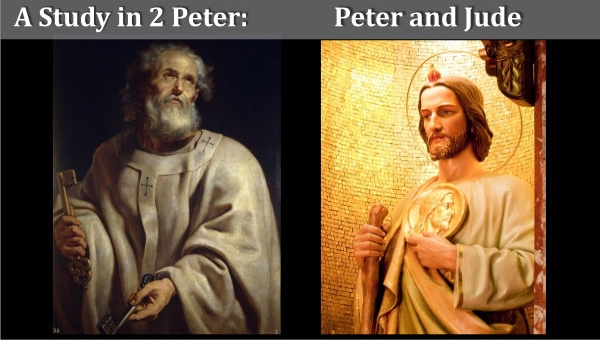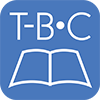By Tyson Thorne

Before moving on to chapter three in our series on 2 Peter, we need to recognize chapter two’s similarities with the book of Jude. The writer identifying himself as Jude, was most likely the half-brother of Christ, son of Mary and Joseph. He did not consider himself worthy of the titles “apostle” or “brother,” as he did not believe in Jesus until after a post-resurrection appearance (John 7.5). Both passages warn of apostates infiltrating the church, that they will be rooted out as God has done before, and that we are to live holy lives in patient endurance until Jesus’ return.
In fact, roughly 30% of Jude is nearly a word for word match of what is found in 2 Peter. For example, examine the following matched verse pairs below.
2 Peter Jude
chapter 2 verse 1 verse 4
chapter 2 verse 4 verse 6
chapter 2 verse 10b verse 7
chapter 2 verse 12 verse 10
chapter 3.17-18 verses 24 and 25
The book of Mark contains even greater similarity with the book of Matthew. There are no other occurrences where it seems clear that one author borrowed heavily from the other in the New Testament.
Like the Matthew-Mark controversy, there are three views which attempt to account for these similarities. The first is that 2 Peter was written first, and Jude borrowed heavily. This is the view of the early church fathers. The second is that Jude was written first, and that it was Peter who borrowed. This view has come about only recently, from scholars of higher criticism. It is unlikely, however, that an apostle of Peter’s stature would borrow so heavily from a simple church elder like Jude. The third view is that Peter and Jude both borrowed from the same unknown source document. Though possible, it is again unlikely. Any document held in such high regard as to have both Peter and Jude borrow, and to be available to Peter in Rome and Jude in Jerusalem, would most certainly have been preserved by the early church. Further, neither authors refer to a source work.
It is our belief at Think-Biblically.com that 2 Peter was written a year before Peter’s death, in AD 66, and that Jude was written shortly after his death in AD 67 or 68. Jude wrote his epistle to fulfill Peter’s wishes that the church be reminded of his warnings and encouragements after his death (1.15). If so, it would make exegetical sense for Jude to have used chapter two as his primary source material especially in light of the rising threat of antinomian Gnosticism.
This brand of Gnosticism combined the Gnostic belief of the Divine Spark that exists in every person with the notion that, if a person is saved by faith alone, there is no moral principle that needs to be obeyed. The Divine Spark means that every person can ascend to godhood with knowledge, and that knowledge can only be fully gained through experimentation in physical pleasures. The teachers of this false faith often quoted from Jewish Scriptures as well as the writings of the apostles themselves, corrupting the true message of Jesus (2 Peter 3.16).
|
|
